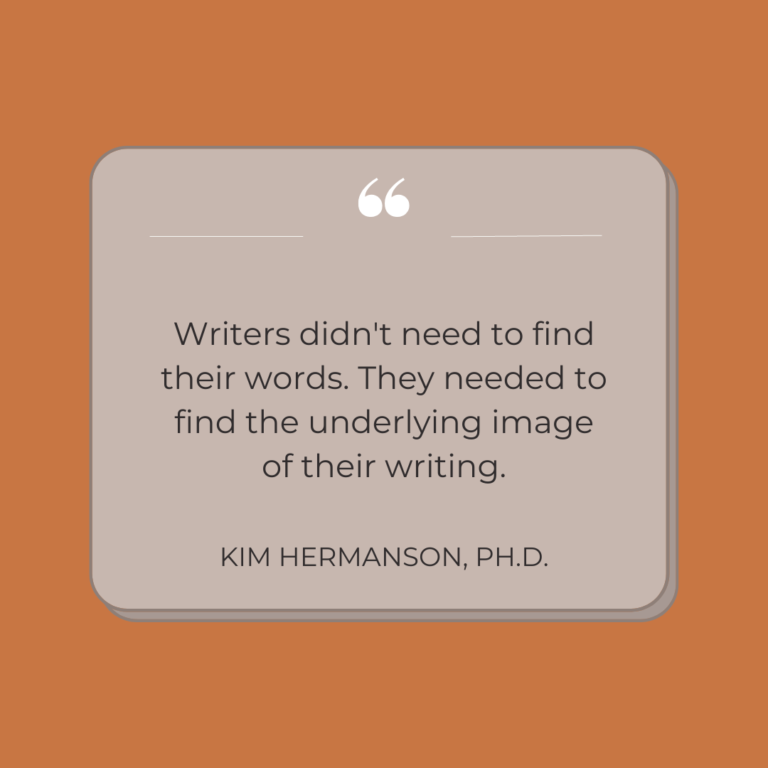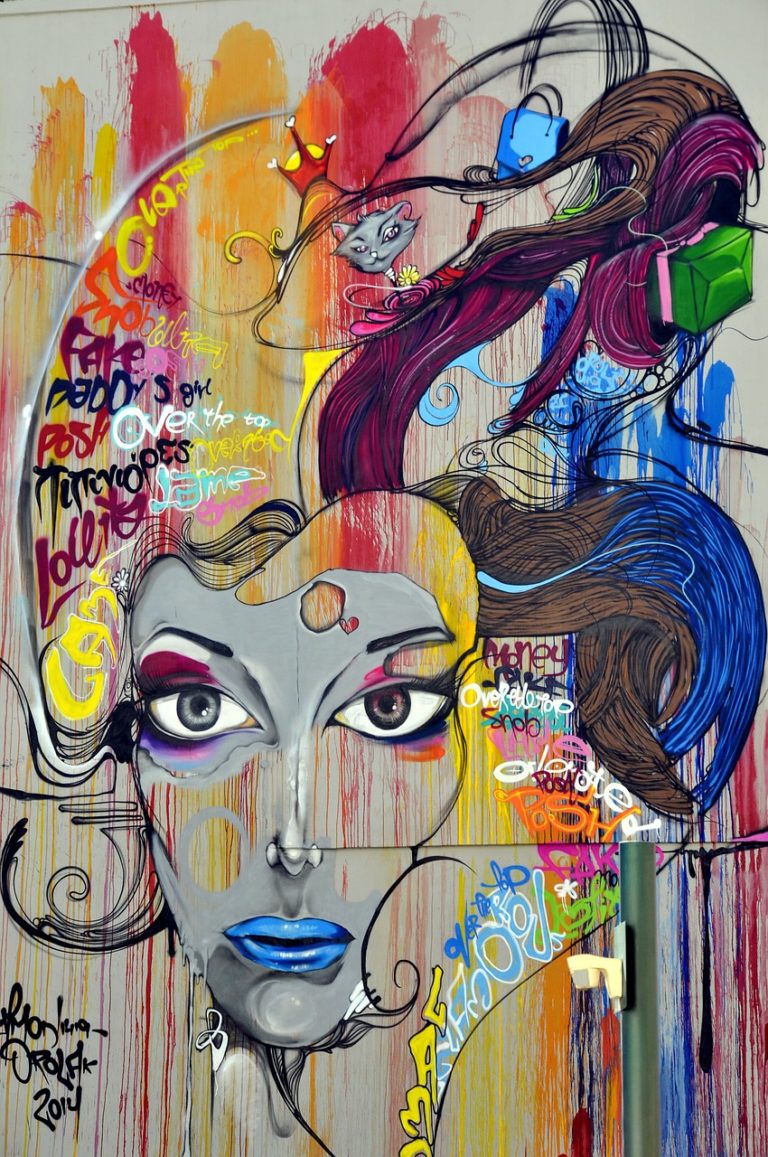Metaphor, Martin Foss, and the creative process

The present is not a phase in time. It is the tension by which past and future are metaphorically united and overcome. ~ Martin Foss
Ten years after I completed the Ph.D., I was speaking to the president of a graduate school about teaching courses for his doctoral students in Depth Psychology. I didn’t have any predefined ideas of what I wanted to teach at this school, but I presumed we would discuss something related to adult learning. In the interview, he looked at me quizzically and then said, “Instead of trying to fit you into our program and have you teach something on our roster, why don’t you tell me what you’d like to teach.” It was a prophetic moment and a prophetic question because to my great surprise, Spirit spoke through me and said I would be teaching a course on metaphor.
I was stunned. I didn’t know anything about metaphor as an academic subject, nor how it related to psychology. But the president of the school responded back promptly as if nothing out of the ordinary had just happened. “Great! We’ll call it the Psychology of Metaphor.”
I walked out of his office not knowing what I was doing or what was going on. This course for Ph.D. students was scheduled to start in two months.
The poet William Blake suggested that if we follow the “golden string” we will be led to Heaven’s Gate, and golden strings started showing up for me almost immediately. Soon after the conversation, antiquated out-of-print books about the psychology of metaphor miraculously started appearing at the library where I do my research. While sitting at a table in the huge reading room, I would glance up from what I was reading, and lying there in front of me would be yet another peculiar book about metaphor, waiting patiently for me to notice it. Foundational research materials continued to show up for me in this mysterious way.
The most influential of these books was Martin Foss’s Symbol and Metaphor in Human Experience. Published in 1949, it looked old-fashioned and obsolete, but something drew me to it.
His writing spoke to me on a deep level. It awakened an understanding of metaphor and the creative process as the central elements of human life. For Foss, metaphor is not merely a tool for our rational minds to play with: it is life itself.
Foss defines metaphor as the ongoing creative process that continually flows through everyday life:
…a process of tension, energy, and creative destruction; one that begins with symbols but transcends and transforms all symbolic fixations and reductions…metaphors break up instead of fixing, keep us on the move instead of letting us settle down…[metaphor] widens, transcends, overcomes, gives birth to the new. Metaphor, compared to the clear, exact, and useful symbol, seemed unclear, complex, and useless—even as a superfluous luxury in the economy of the human mind. It was regarded as an ornamental addition. But what soon came to puzzle thinking men was how a supposed ornament could exert so dynamic a power in myth and artistic creation.
Foss’s view of metaphor is aligned with its ancient roots and meanings. While the word symbol means linking together two dissimilar things (coming from the Greek roots syn which means “together” and ballein, which means “to throw”), the word metaphor means a carrying beyond. Metaphor comes from the Greek roots meta (“across” or “beyond”) and pherein (to “transfer” or “change”).
Unlike the symbol, metaphor is not just a link to something new; metaphor takes us somewhere by changing form. With metaphor, things shift and move—our deep, inner creative process is shamanic territory.
Metaphor operates below our conscious minds, so it’s not something we can thoroughly understand through a rational thinking process. It’s not quite “of this world,” it’s “in-between” the realms, and trying to define it is slippery. In fact, in his book, Death, Sacrifice, and Tragedy, Foss goes so far as to say:
“[Metaphor] is the secret of all life. It is the innermost secret of the life of God himself.”
Upon doing a little research, I discovered that at the time Symbol and Metaphor was published in 1949, it was highly acclaimed and prompted some scholars to regard Foss as a greater philosopher than Martin Heidegger (see Armour & Trott’s book, The Faces of Reason: An Essay on Philosophy and Culture in English Canada.) But a few short years later, Foss and his work were largely forgotten. In 1956, the American Scholar listed Symbol and Metaphor in Human Experience as one of the most important and neglected books of the twentieth century.
Picasso famously said that every act of creation begins with an act of destruction. A similar notion comes from the process philosophy of Teilhard de Chardin and the Kabbalists. The Kabbalists held that the process of both God’s and man’s creativity is predicated upon a dialectic of destruction and rebirth, in which old configurations of thought and being are consistently torn asunder to make way for new conceptions and forms of life. Such breakage can occur in a person’s life and provide him or her with sufficient chaos to be personally reborn.
In Death, Sacrifice and Tragedy, Foss calls this dialectic of destruction and creative rebirth a “sacrament”:
Life in its core is a perpetual conversion from a lower sphere to a higher one, destroying the lower for the sake of realizing the higher, and this creative destruction, the sacrificial action, conveys to life its essential character, which is sacramental.
Many of you have probably experienced “building” stages in your life. Periods of time when you invested your heart, sweat, and tears into developing something—a family, a business, a work of art, a career. And then at some point later, it all crumbles. Your spouse leaves and the kids move out, your career no longer inspires you, the band you’ve spent years developing dissolves, the business goes belly up. Foss calls this profound loss of something we’ve invested our life energy in creative destruction. This cycle of regeneration is how a culture stays vibrant; it’s also how we humans stay vibrant.
The creative is sacrificial…by its very nature. In other words, we humans are inherently designed to sacrifice ourselves to the movement of Something greater.
In our culture, there is a scarcity of consciousness about this transformative process, because our rational mode of perception involves analysis, making distinctions, and creating categories. Our minds need “labels.” In order for them to make definitions and distinctions, things (people, places, situations) need to remain static and unchanging.
Our minds don’t have a way to think in terms of process.
But… the Deep Creative is not static. It’s comprised of energy and energy moves. We humans live in a relational world.
Foss’s books—Symbol and Metaphor in Human Experience; Death, Sacrifice and Tragedy; and Logic and Existence—are inspirational and deserve to be more widely known. More than anything they help us understand transformative process.





